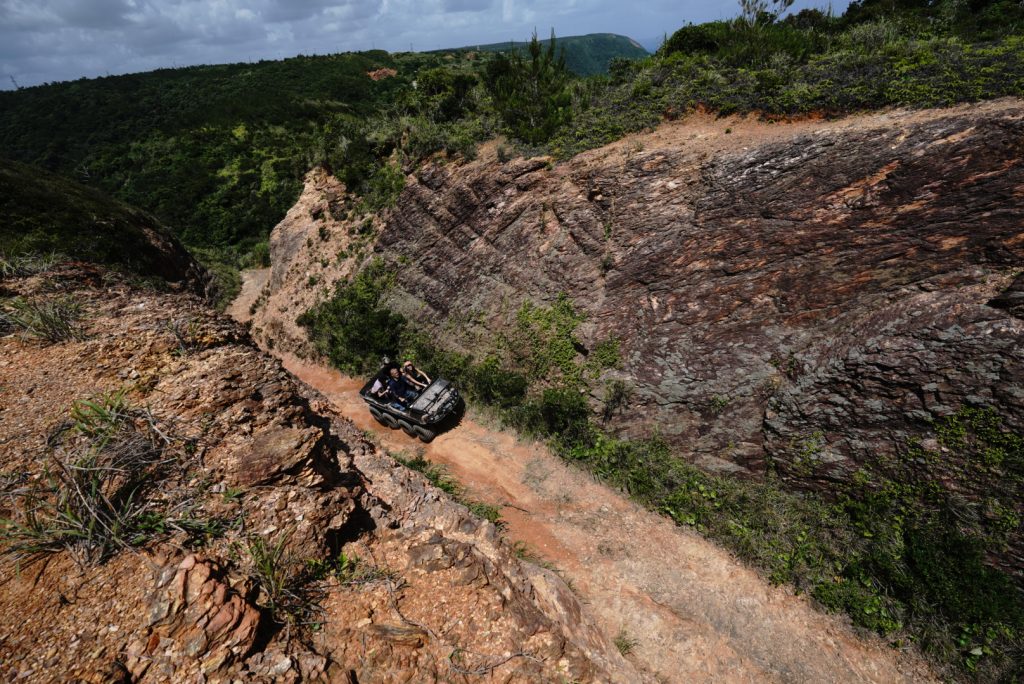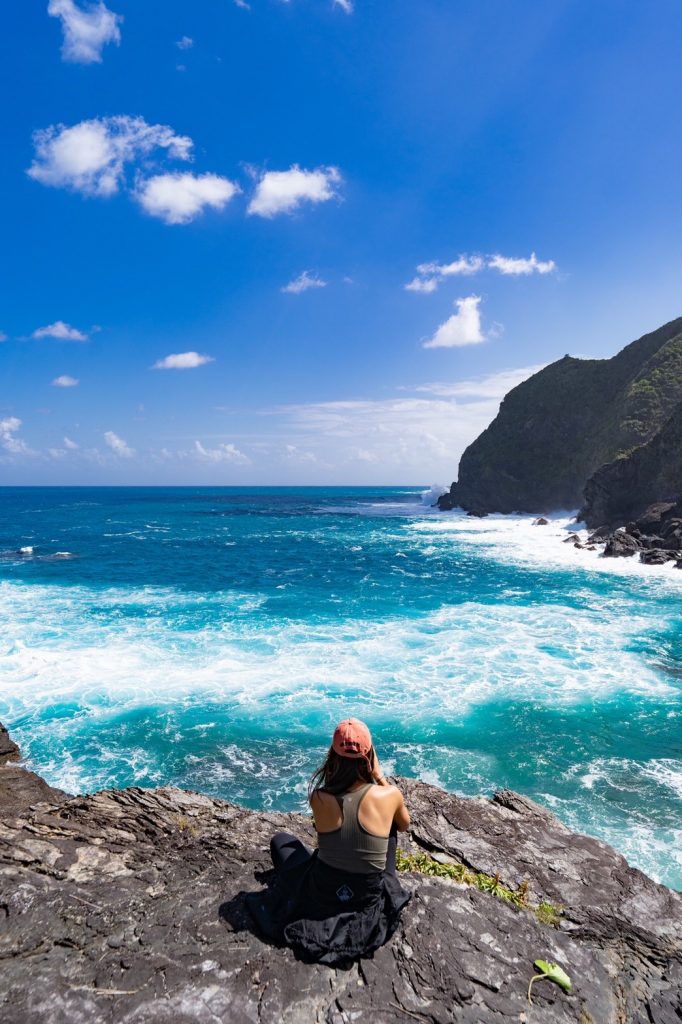Tucked away in the lush jungles of Okinawa is an eco-conscious retreat called Treeful Treehouse. This sustainable resort is an immersive experience that invites guests to reconnect with nature.
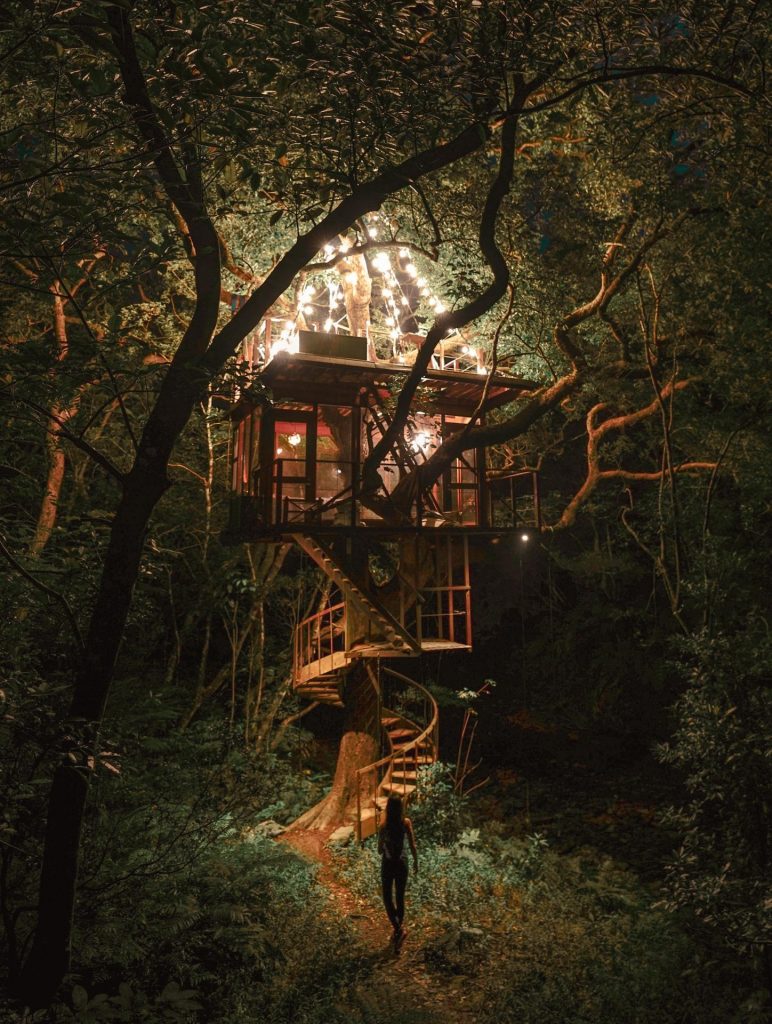
Treeful Treehouse is led by Tokyo natives Satoru Kikagawa and his daughter Maha. As a child Satoru was inspired by the Japanese children’s book, “I Want a Big Tree,” and he dreamed of building a treehouse ever since. Summer holidays were spent with family in the mountains or the countryside. Much later as an adult, he was triggered by deforestation he witnessed in Borneo during a family trip.
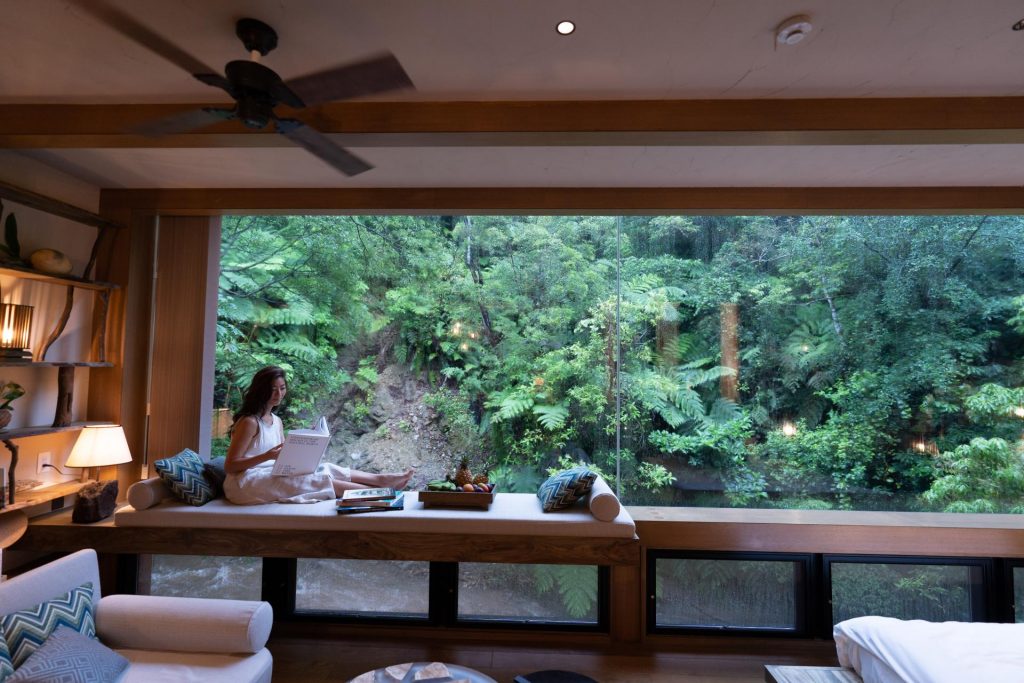
Meanwhile, Maha grew up enjoying nature and studied ecosystem science and policy in the Galapagos Islands and Peru. She wanted to give back to nature and thought that a treehouse resort would be the perfect way to do that.
After failing once to build a treehouse, Satoru pushed through, and in 2014, he built his first treehouse—Spiral Treehouse in Okinawa. Okinawa has untouched native forests and trees that are uniquely curvy compared to those in colder climates, making it ideal for treehouse building. It was a steep learning curve as Satoru and Maha transitioned from being a chairman of a gaming company and an event organizer to treehouse builders. They were aided by their realtor, who believed in them and their commitment to nature preservation. He helped them search northern Okinawa for the perfect big tree to build a treehouse and make their dream a reality.
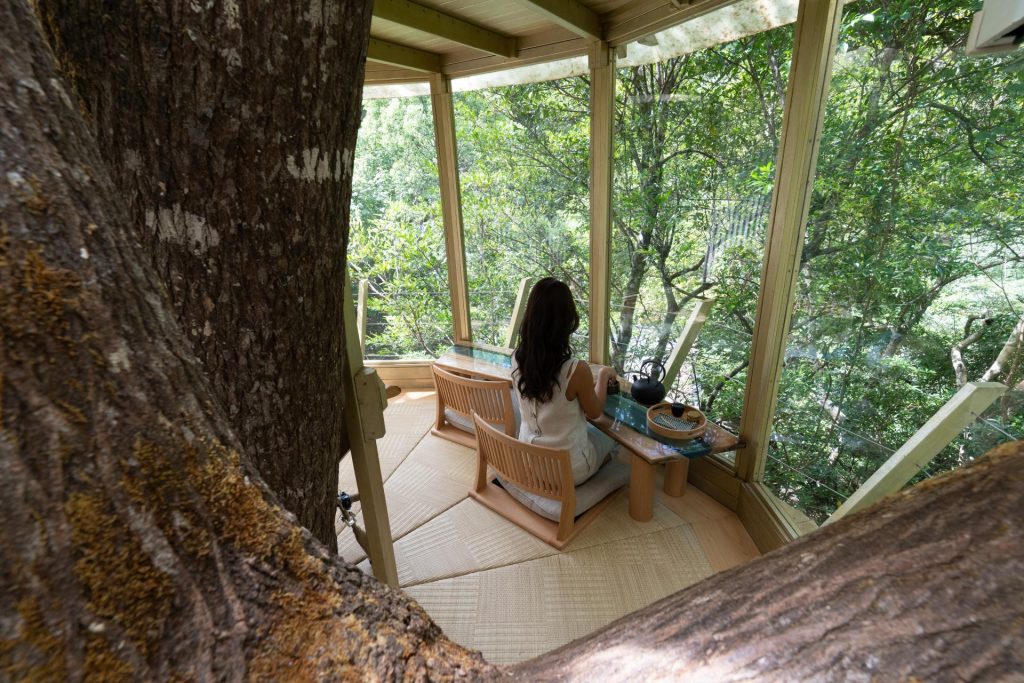
“Some people didn’t take the project seriously at first, but I didn’t care,” says Maha. “I get to give back to nature this way, and that’s exciting and fun for me.”
In 2021, the father-daughter duo officially opened the treehouse as a hotel, proving that sustainability and luxury can coexist seamlessly. They have plans to expand to ten treehouses, all located in the same area. As expected, opening a treehouse resort came with its challenges. There were legal issues and logistics such as digging their own well for water and passing the water quality test, as well as finding cleaners who could commute everyday to the mountainous jungle. The resort is carbon negative, meaning that it absorbs more carbon dioxide than it produces, and it does not use any fossil fuels.
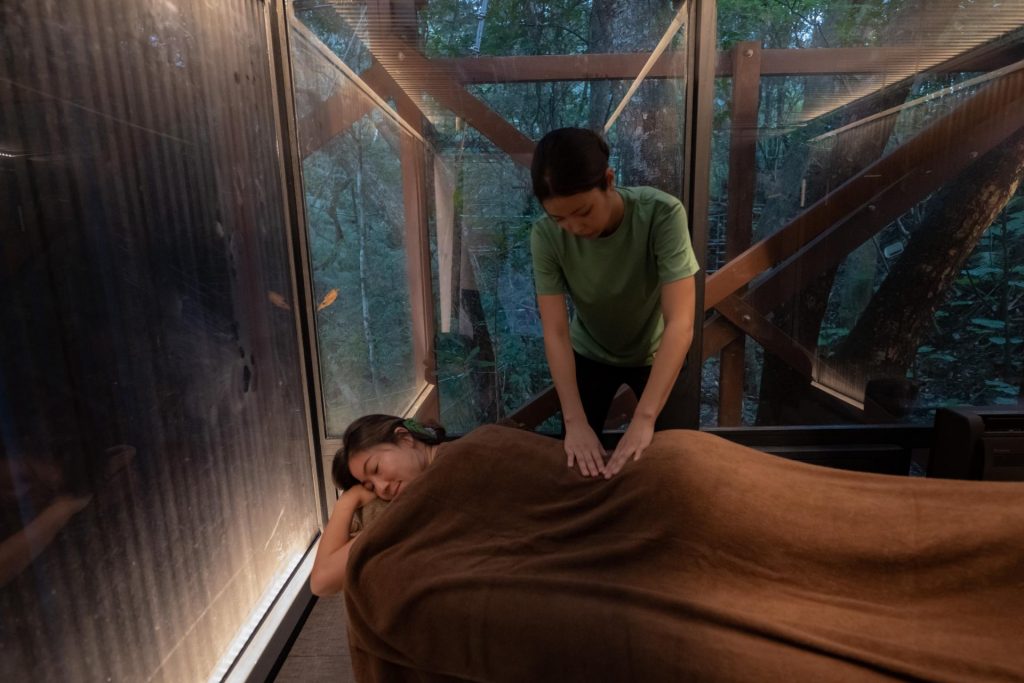
Their solar energy panels create more electricity than what is used. The resort is not powered directly by solar energy but does feed off renewable energy from Okinawa Electric Power’s Uchina CO2 Free Menu. This is a renewable energy source that uses non-fossil certificates from solar, wind and biomass power generation in Okinawa, thereby reducing carbon dioxide emissions. The water is drawn from a well and sourced from the Genka River that flows in front of the treehouse and is sterilized by ultraviolet rays instead of chlorine. For hot water and showers, the water is boiled in a tank using EcoCute, a system that uses surplus electricity at night. One of their toilets is a compost toilet.
They also work on sustainable projects nearby, like Shizogumui Waterfall. Around 100 years ago, the waterfall used to be a popular spot for children to play as it was a pool with a water mill. However, someone put concrete there and destroyed the mill, so Satoru and Maha reversed that by removing the concrete blocks and reinstalling the water mill.
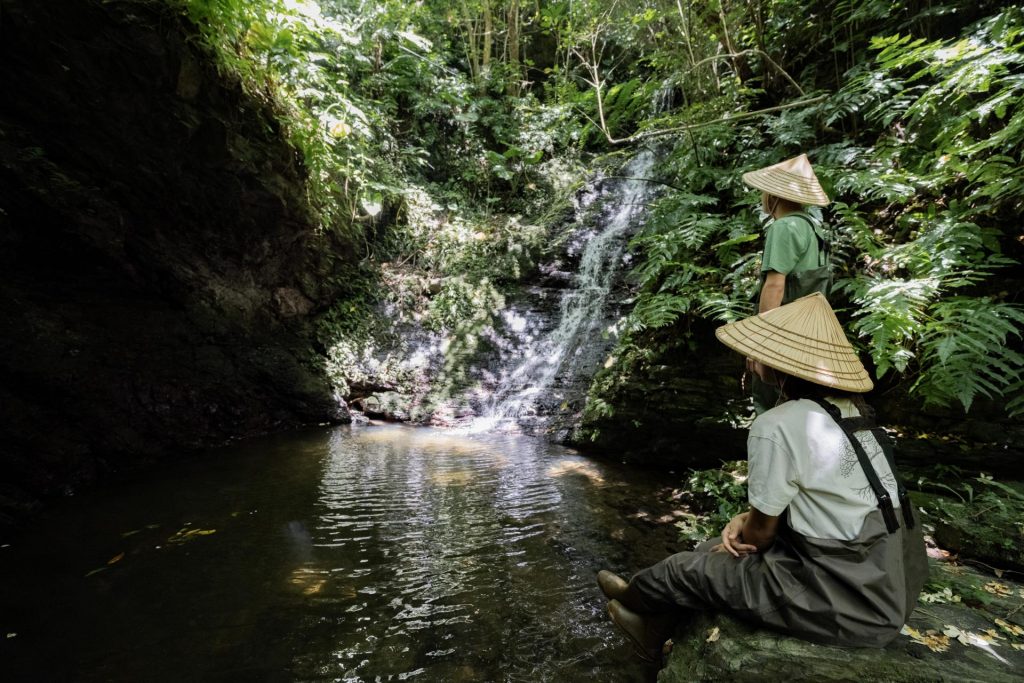
The treehouses sit at 1.2 meters or higher above the ground so that sunlight and rain can reach the soil and let plants, microorganisms and roots grow while avoiding animal habitats from being disturbed or damaged.
“It’s like we are renting space from the tree,” says Maha.
The treehouses are surrounded by native, endangered flora and fauna such as the Ryukyu spiny newt, Okinawa gecko, aomiokatanishi (a tropical ancient snail), sword-tailed newt and Ryukyu ruddy kingfisher.
Currently the Spiral Treehouse and another structure—the AeroHouse—is available for accommodation, with two more treehouses opening this year. There is an overseas project in the works as well. When guests book, they have access to both buildings (at the moment, you must book both). The treehouse is literally built around the tree, as you can even touch the trunk from inside. Floor-to-ceiling walls offer panoramic views of the Okinawan jungle. A private butler prepares ingredients that guests can cook easily around a fire on the tree deck, and there are plans for private chef options.
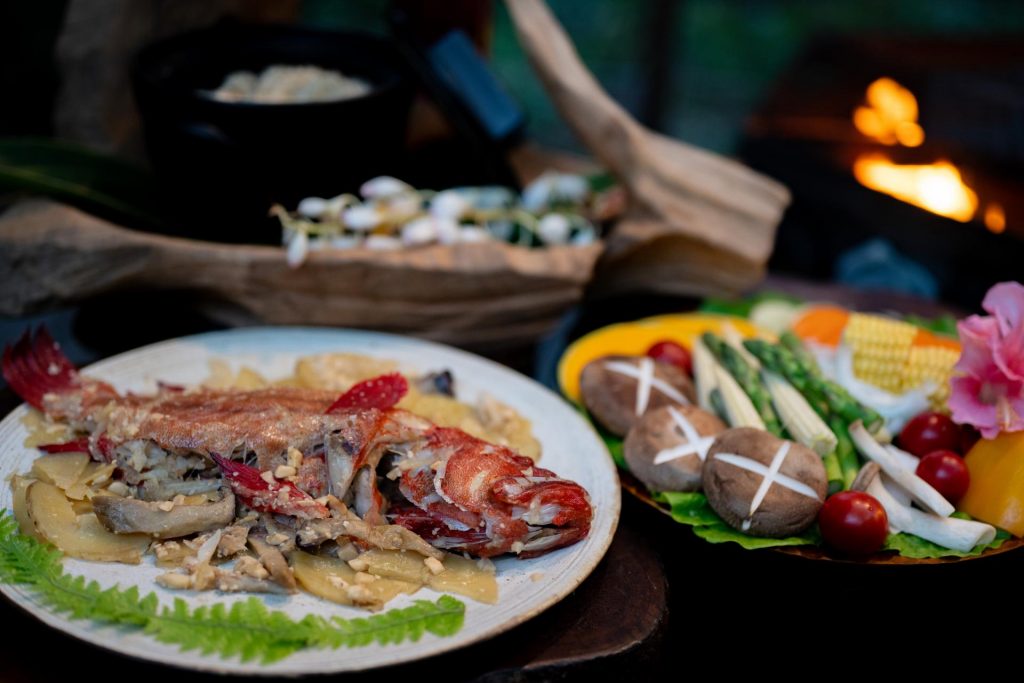
There is a complimentary river trek tour at Genka River and a trekking tour at Cape Takae, which offers ocean views. If you’re lucky, you might see the endangered Ryukyu black-breasted turtle which is only found in Okinawa and designated as a national treasure of Japan. There is also an amphibious eight-wheeler tour to hard-to-access spots. Guests with Japanese or international driver’s licenses can have a go at driving the eight wheelers.
The hotel is open year round with summer being a popular time to visit. Winter however provides a warm escape from the rest of Japan’s chilly weather. There are fewer bugs and the river is cooler so it is refreshing to jump in after a hot sauna or while river trekking. The night skies are also clearer in winter.
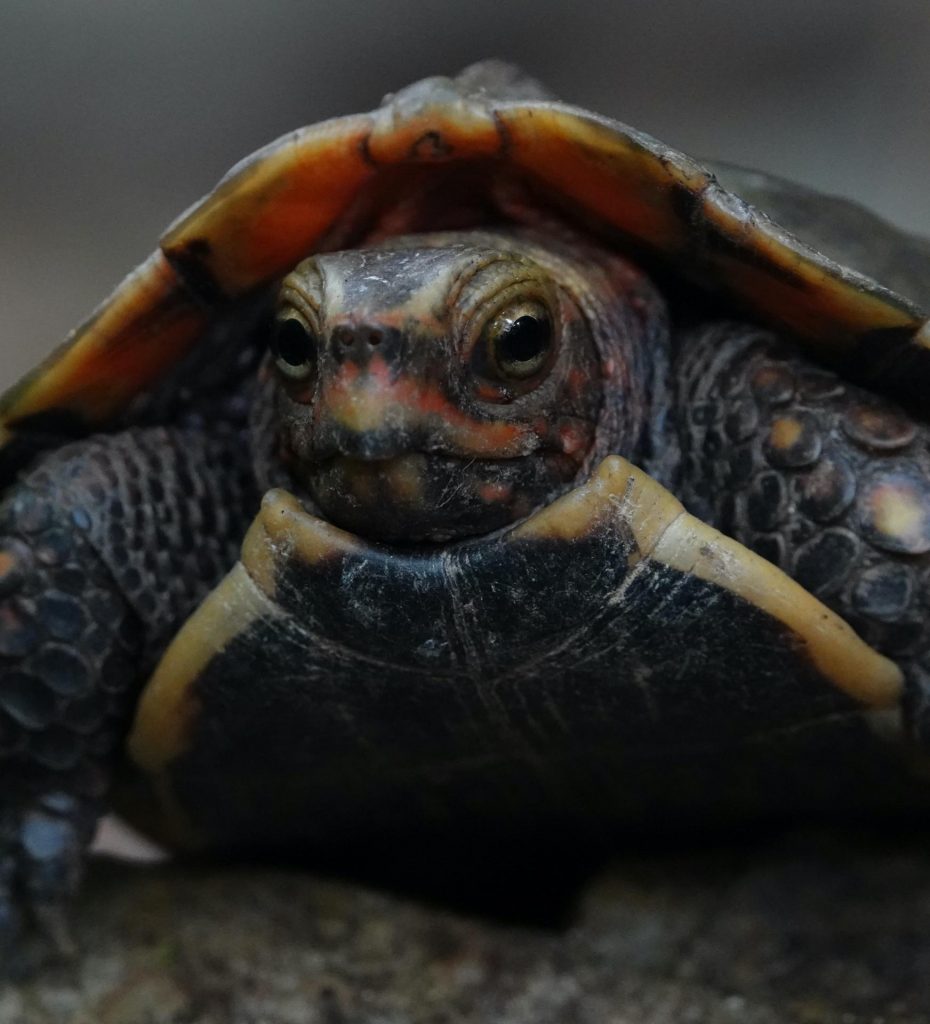
For more information on Treeful Treehouse, visit treeful.net.
GETTING THERE
Treeful Treehouse is about an hour-and-a-half drive from Naha City. The best way to get here is by car. Note that access may change due to weather, road constructions or obstacles. Once you’re in the forest, phone signal may drop so check the routes beforehand and drive safely. Their website has specific instructions on how to get to Treeful Treehouse including Google map locations. v





